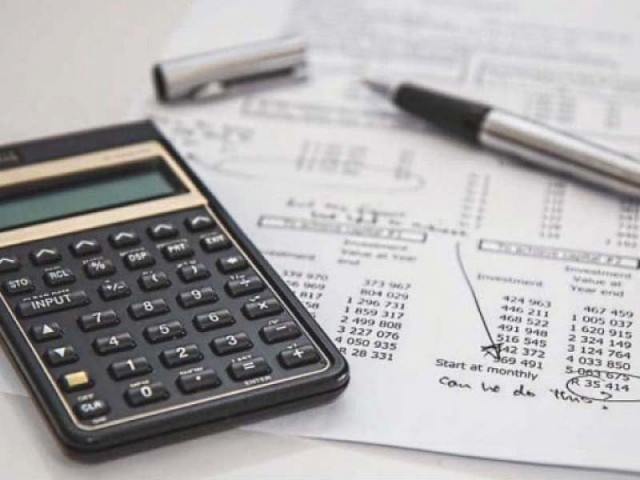How to Avoid These 4 Common CPF and SRS Mistakes Before You Retire
If you’re earning between S$6,000 and S$15,000 a month and making use of CPF retirement planning and the SRS Singapore scheme, you’re already ahead of most. You’ve taken the important first step: recognising that retirement doesn’t just “happen” — it’s built.
However, even seasoned professionals can fall into habits or assumptions that quietly erode future CPF LIFE payouts. Sometimes, these mistakes aren’t obvious until years later, when there’s less time to fix them.
In this 2025 guide, we’ll walk through four common pitfalls that could cost you thousands and show you how to avoid them. You’ll get the latest CPF and SRS figures, plus practical retirement planning Singapore tips that you can put into action immediately.

1. Over-Reliance on CPF OA for Housing
For many, the CPF Ordinary Account (OA) feels like the perfect housing piggy bank. It’s right there, earning interest, and it reduces the need for cash from your pocket.
But here’s the trade-off: OA funds earn 2.5% p.a., while Retirement Account (RA) balances earn 4% p.a. That 1.5% difference may seem small now, but over 20 or 30 years, it compounds into a significant gap in your retirement payouts.
From 2025, the Special Account (SA) closes for members aged 55+, with balances transferred to RA up to the CPF Retirement Sum 2025 and any excess channelled into OA.
This change means it’s even easier to end up with more in OA than you might have planned and therefore earn more at the lower rate.
2025 CPF Retirement Sums & Monthly Payouts:

Think of it this way: every dollar you let sit in OA instead of RA is a dollar that could have earned more interest for decades, increasing your lifetime CPF LIFE income.
Pro Tips:
- Review your CPF Dashboard to compare CPF OA vs RA interest allocations.
- Transfer excess OA to RA early to lock in higher interest rates.
- Keep liquid savings outside CPF so you’re not forced to overuse OA for housing.
2. Leaving SRS Funds Idle
The Supplementary Retirement Scheme is built for tax-deferred savings, but it only works if your money is working too. Leaving it idle in cash means it earns just 0.05% p.a.. That’s barely a trickle and far below the rate of inflation.
As of Dec 2024, 19% of SRS funds (~S$3.9B) sat uninvested, slowly losing value in real terms. This is one of the most common and costly oversights. It’s easy to tell yourself you’ll “get around to investing” later, but every year your money sits idle is a year of lost growth.
A better approach is to treat SRS the way you would any other long-term portfolio: with a clear plan and disciplined execution. For example, even a low-risk instrument like a Jan 2025 Singapore Savings Bond offered 2.86% p.a. over 10 years, which is over 50 times the return of leaving your SRS in cash.
Pro Tips:
- Invest idle funds in ETFs, REITs, Singapore Savings Bonds, or unit trusts.
- Consider how long you have until retirement and match your investments to that horizon.
- Start sooner rather than later, as compounding works best over time.
For example, as of July–August 2025, fixed deposit (12-month) rates range from ~2.45% (DBS/POSB) to ~1.45% (Bank of China), and SSB average returns vary between 1.82% (1‑year) and 2.29% (10‑year).

3. Early SRS Withdrawals
The flexibility to withdraw from SRS before retirement age might sound reassuring, but it’s an option that comes with a steep price. Any early withdrawal triggers a 5% penalty and makes 100% of the amount taxable.
Once you reach the statutory retirement age (63 now, 64 from 2026), withdrawals are far more efficient: only 50% is taxable, and you can spread them over a 10-year window to manage your tax bracket.
This is why planning ahead matters. If you suddenly need a large sum and your only option is an early SRS withdrawal, you’ll lose part of it to penalties and the rest to unnecessary tax. Keeping a separate emergency fund is not just smart, but also it’s essential.
Pro Tips:
- Maintain an emergency fund outside SRS to avoid tapping it prematurely.
- Plan withdrawals to stay within a lower tax band each year.
- Remember: your lock-in age is fixed based on when you first contributed, not when you withdraw.
Note:
The 10-year withdrawal window starts when you make your first penalty-free withdrawal (not automatically at your birthday). Plan the start year carefully.
4. Missing Out on MRSS Matching
The Matched Retirement Savings Scheme (MRSS) is one of the most effective, and often overlooked, ways to grow your retirement savings. Here’s what’s essential to know:
- Matching grant boosted in 2025: Starting 1 January 2025, the government offers a dollar-for-dollar matching grant up to S$2,000 per year**, with a lifetime cap of S$20,000, and the age cap has been removed.
- Tax relief nuance: Cash top-ups that qualify for MRSS matching do not earn CPF cash top-up tax relief. However, non-matched top-ups remain eligible for relief, which is up to S$8,000 for self and S$8,000 for loved ones annually, or S$16,000 total.
Skipping eligible MRSS top‑ups means leaving free, risk‑free money on the table. Even partial top‑ups earn matching and elevate your RA balance, boosting your future CPF LIFE payouts.
Pro Tips:
- Check your MRSS eligibility via your CPF Dashboard every year. No application is needed.
- Top-up early in the year to enjoy growth from compounded interest.
- Be mindful: while matched top-ups forfeit tax relief, the matching grant itself is often a better benefit than the forgone relief.
Conclusion & Next Steps
Avoiding these four CPF and SRS mistakes, which are overusing OA, leaving SRS idle, making early withdrawals, and ignoring MRSS, can significantly boost your retirement income and give you more options in your later years.
Your Action Plan:
- Audit your CPF and SRS balances this week.
- Invest idle SRS funds based on your goals.
- Plan RA top-ups if MRSS-eligible.
- Map SRS withdrawals to minimise tax and penalties.
By understanding how to maximise CPF interest rates and using the SRS Singapore scheme strategically, you’re not just protecting your retirement, you’re actively improving it. Small, consistent actions now can make a significant difference when you finally step into your golden years.
References:
- Grow BeanSprout, "SRS: Supplementary Retirement Scheme Tax Savings"
- DBS, "Investing Your SRS"
- State Street Global Advisors, "Understanding Singapore’s Supplementary Retirement Scheme (SRS)"
- Syfe, "Best Fixed Deposit Rates in Singapore"
- Inland Revenue Authority of Singapore, "Tax on SRS Withdrawals"
- CPF Official Website, "Matched Retirement Savings Scheme: What You Need to Know"
Let us know what you think about this topic, and what do you want to hear next.
You can now be our community contributor and make a pitch to have your favourite personality be on our show.
Join our community group and drop us your insights on this topic.

-Jun-01-2025-06-24-42-9139-PM.png?width=50&name=Square%20(2)-Jun-01-2025-06-24-42-9139-PM.png)




-2.png?height=200&name=2024%20website%20assets%20(1)-2.png)






Let us know what you think of this post